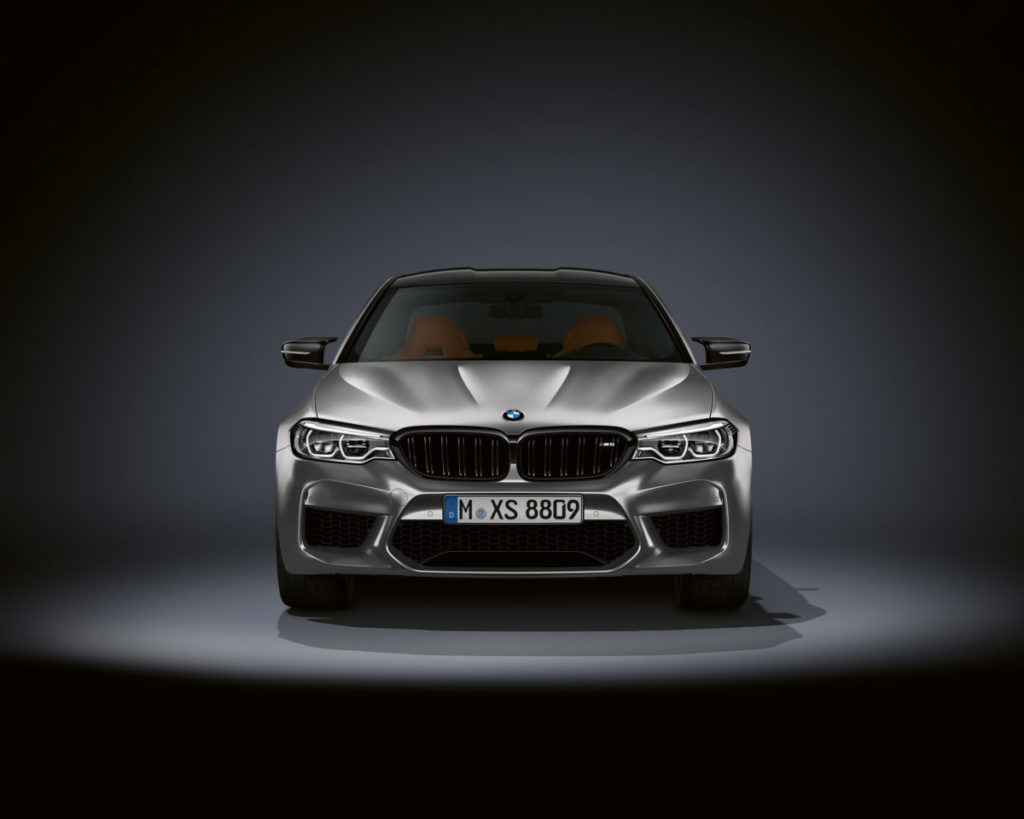Hot on the heels of the M2 Competition announcement, BMW has dialed up the performance of its midsize luxury super sedan with a similar treatment. The M5 Competition is the second model to use the full Competition nomenclature which represents a change from previous offerings, like the E46 and E9X generation M3 cars, late model versions of which were offered with an available Performance Package (ZCP) option group from the factory. Rather than a line item on the window sticker as before, the new crop of Competition models seem to offer a bit more in the way of performance-oriented upgrades that help to set them apart from their mainstay counterparts more than ever before.
Based on the current production F90 platform, the M5 Competition offers marginally more power than the standard car, but don’t let the forum pundits and internet commenters fool you—independent sources report that the standard and currently available M5 is capable of posting a Nurburgring lap time just ten seconds shy of the stripped-down, track-focused, caged and water-injected M4 GTS, which weighs nearly 1,000 pounds less. With the changes made for the M5 Competition, we expect that gap to narrow even more, which is no small accomplishment for a sedan in this segment.
Although torque output remains the same as before at 553 lb. ft., the rev-band plateau at which it occurs has been stretched an addition 200 rpm which serves to increase the high-revving personality of the 4.4-liter M TwinPower Turbo V8. Horsepower is up to 617, which peaks at precisely 6,000 rpm, and while we’re getting into the specifics of the figures, acceleration times have also dropped proportionately. Although the power gain seems small, the M5 Competition will still feel significantly different than the standard M5 thanks to increased rigidity and lower spring rates in the engine mounting system and driveline connections—even in the softest of settings.
It sounds like much of the M xDrive and M Steptronic systems remain unchanged including the Active M Differential, but the suspension itself has the been recipient of significant tuning. The main coil springs now account for a ride-height seven millimeters lower than before with appropriate model-specific dampers, while front auxiliary springs were also shortened. The front sway bar is now mounted in a different configuration, and the rear has been changed for a firmer unit. Rather than rubber components, toe-links now employ ball joints for precise rear-axle manipulation.
Those of us that have replaced worn and tired suspension parts on our own BMWs know that the process often triggers, or happens in conjunction with, a rethinking of the tire and wheel setup. BMW notes that the engine and suspension have both been specifically matched to one another, and components responsible for contact with the road surface have also received attention. The wheels themselves are now a lightweight-looking Y-spoke design with a one-inch diameter increase all around, while the tires run the same 35 profile as the optional twenty-inch setup for the regular M5.
The exhaust is also bespoke to the model, but still uses an electronically-controlled flap design as before. The system definitely looks a a bit different though, thanks to a set of black chrome finishers, while BMW also mentions a particulate filter which makes for reduced emissions. Other exterior changes include the use of high-gloss black finish for the kidney grille surround, mirror caps and mesh coverings for vents. A subtle rear spoiler and specialized lettering round things out on the rear end.
Looking beyond the Aragon Merino leather of the interior, the seat belts now show the M tricolors, and plus floor mats come with special piping. Upon startup, the gauge cluster will also welcome drivers with model-specific graphics.
Pricing has been listed with an MSRP of $110,995 (including $995 destination fee), which translates to an approximate $7,000 increase over the regular 600 hp M5. If the price tag seems disproportionately high for the added performance, consider the fact that the take-rate for Competition Package-equipped previous generation M5’s was 40%.—Alex Tock
[Photos courtesy of BMW AG.]
